The Navy’s plan for its next trainer jet shows how carrier aviation has changed
- By Hope Seck
Share This Article
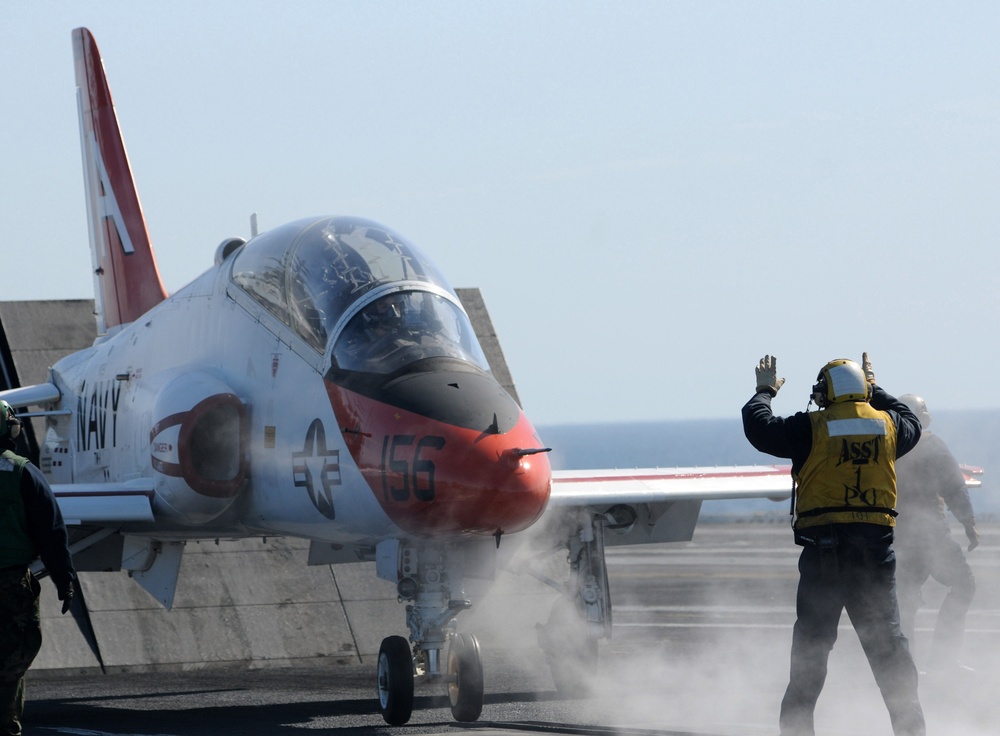
Earlier this year, the Navy quietly released an updated requirement for its Undergraduate Jet Training System (UJTS), the platform it plans to buy to replace aging and overworked T-45 Goshawk trainer aircraft. That requirement marks a significant break from a standard past Navy requirement as it reveals that student aviators will no longer have to practice touching down on carriers in training before they get out to the ships. That skill that once made even seasoned aviators sweat –particularly in low-visibility conditions or on choppy seas – will now be performed by new pilots in real-world conditions, without low-stakes airfield practice sessions.
“Due to advancements in operational platform landing modes and in ground-based simulation, the UJTS air vehicle will only be required to conduct Field Carrier Landing Practice (FCLP) to wave off,” the Request For Information, published March 31, states.
This change follows years of data showing the effectiveness of Precision Landing Mode (PLM) software, which takes the guesswork out of one of the most precise and unforgiving tasks in aviation. The Navy began fielding the Maritime Augmented Guidance with Integrated Controls for Carrier Approach and Recovery Precision Enabling Technologies – known, in a work of acronymic artistry, as MAGIC CARPET – on the F/A-18 Super Hornet in 2016. A version of the same technology, then called Delta Flight Path, was rolled out for the F-35 Joint Strike Fighter in the same timeframe.
These systems control the aircraft’s glide slope, automatically adjusting to keep the angle steady – this requires many small corrections that previously had to be done manually by the pilot. Even back in 2016, naval aviators were already predicting the impacts the impressive new tech would have on training and operations.
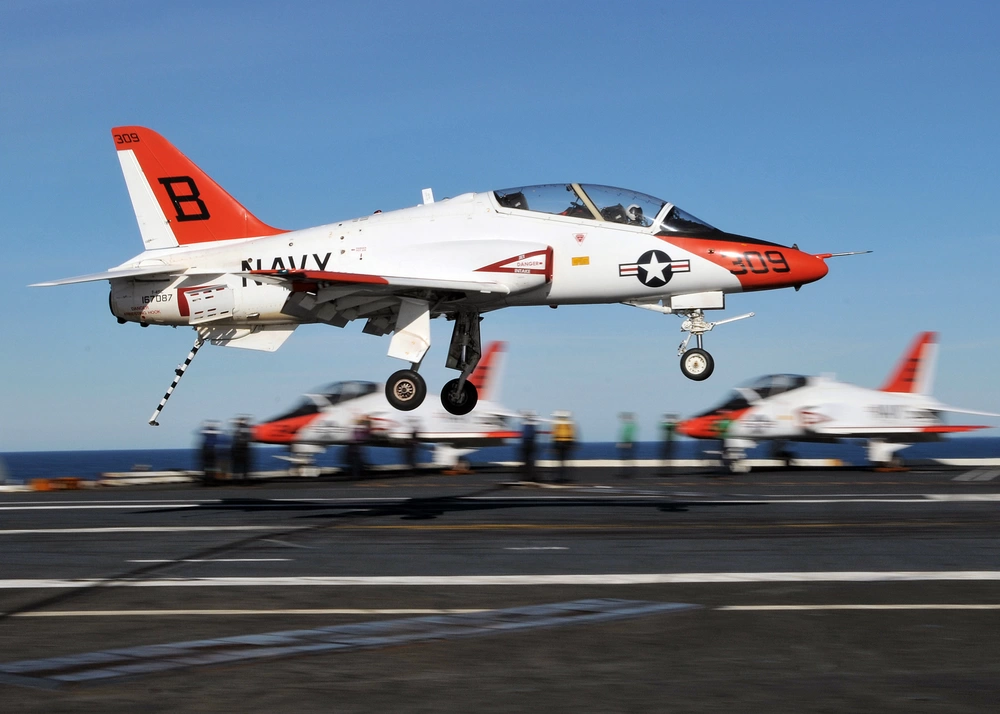
“What has traditionally been required for initial qualifications … that can probably be reduced, because the task becomes mundane after a while,” Lt. Cmdr. Daniel Kitts, an officer in charge of the testing detachment aboard the aircraft carrier USS George Washington, told me during an embark off the coast of Norfolk, Virginia in 2016. “You can make corrections so easily.”
Kitts added that he expected pilots to have more time to devote to tactical proficiency and skill-building in other areas, thanks to the technology.
“So what you’re able to do when you come out here is hopefully spend less time practicing, because the workload on the pilot is extremely reduced.”
PLM technologies have continued to perform well over the intervening years, Lt. Cmdr. Trevor Phillips-Levine, a career naval aviator currently serving as director of Integrated Fires for U.S. 7th Fleet, told Sandboxx News. While an F-35C did experience a landing mishap in 2022, forcefully hitting the flight deck after an underpowered descent, that incident was determined to be caused by pilot error. And, Phillips-Levine said, the pilot had failed to engage the PLM system.
“Having flown MAGIC CARPET, it is literally magic,” he said.
When Phillips-Levine was training as a student pilot in the T-45, he recalled “boltering like crazy,” meaning he missed the arresting wire and needed to circle around for another approach.
“I remember engaging MAGIC CARPET for the first time, and the plane was absolutely smooth,” he said. “It was super, super easy to maintain glide slope.”
Related: Navy bolsters its aircraft carriers’ defenses with expendable loitering interceptors
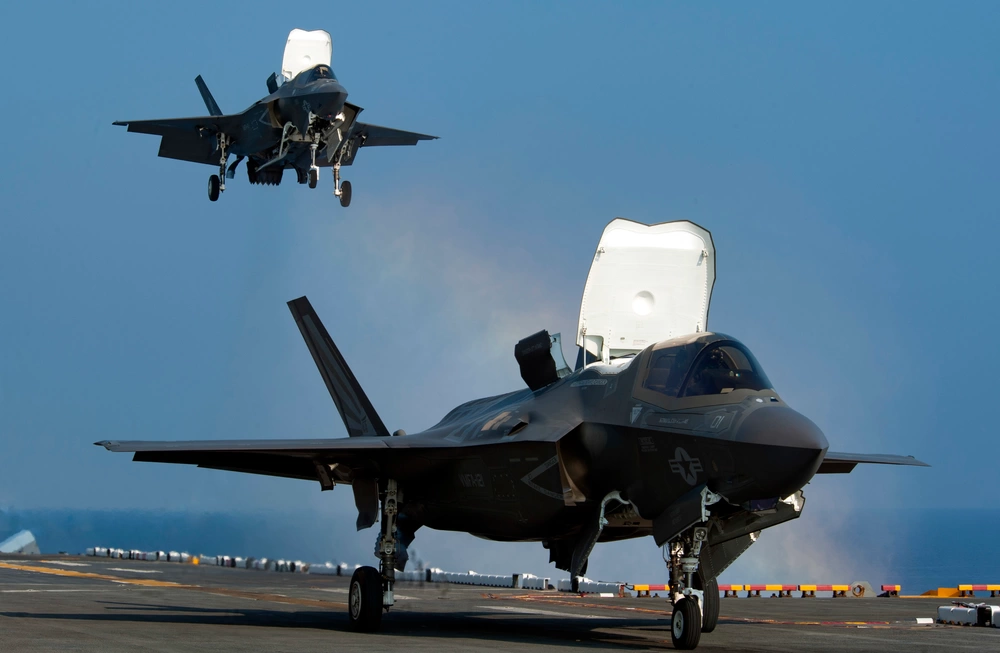
Between 2022 and 2024, he said, the Navy put the technology to the test, training different batches of students, some of whom would bypass field carrier qualification and encounter carrier landings for the first time on the ship.
“Now we did see some performance differences between people who carrier-qualed first with the training command and those who did not, but it was in the admin around the boat, not the landing itself,” he said. “So what does that mean. It means we don’t necessarily have to focus on landing on the ship. We have to focus on all the stuff to get around the ship. That’s the stuff that needs to be briefed better.”
While Phillips-Levine said he’s heard concerns that the precision landing technology will result in aviators losing the manual landing skills they once had to cultivate, he argues there’s no meaningful loss: the pilots will be able to devote more time and flight hours to development of other skills – all while easing up on requirements for a trainer the Navy badly needs.
“It costs over $1 million a day to get a carrier out there to do carrier qualification, and their schedules are busy – they’re packed,” he told Sandboxx News. “So anytime you can free their demand up to focus on other things, is goodness.”
Feature Image: A handler guides a T-45 Goshawk, assigned to the “Tigers” of Fixed Wing Trainer Squadron, to a catapult on the flight deck of Nimitz-class aircraft carrier USS Ronald Reagan. The Goshawks received the fast-paced experince of Ronald Reagan, first landing on the carrier and then being launched only moments later. Ronald Reagan is underway conducting Fleet Replacement Squadron Carrier Qualification in the Pacific Ocean. (Photo by Chief Petty Officer Torrey Lee/U.S. Navy)
Read more from Sandboxx News
- How an F-15E scored its only air-to-air kill… with a bomb
- ‘Warfare’ shows the brutal reality of combat for an elite unit
- Air Force Special Operations Command celebrates 35 years of heroism and service
- Caseless ammo could be the future of cartridges
- A stealth bomber for the toughest missions: The B-2 Spirit
Related Posts
Sandboxx News Merch
-
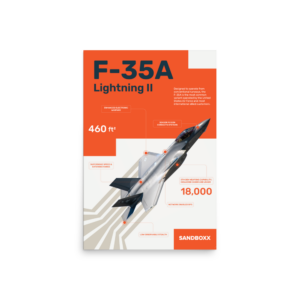
F-35 ‘Lightning’ Poster
$22.00 – $28.00 Select options This product has multiple variants. The options may be chosen on the product page -
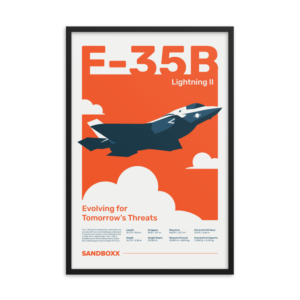
F-35 ‘Evolution’ Framed Poster
$45.00 – $111.00 Select options This product has multiple variants. The options may be chosen on the product page -

A-10 ‘Warthog’ Poster
$22.00 – $28.00 Select options This product has multiple variants. The options may be chosen on the product page
Hope Seck
Hope Hodge Seck is an award-winning investigative and enterprise reporter who has been covering military issues since 2009. She is the former managing editor for Military.com.
Related to: Airpower, Gear & Tech
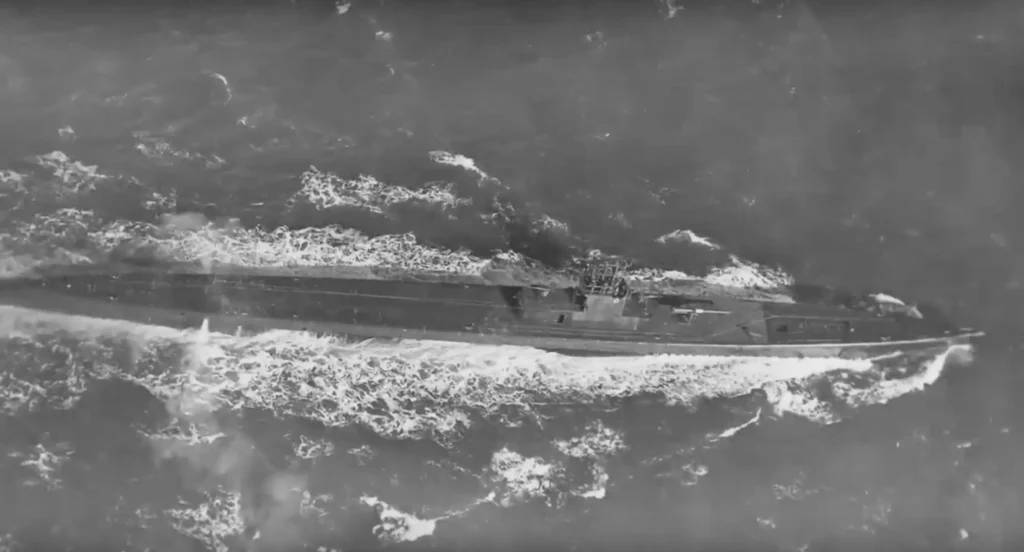
‘USS Dorado Project’ aims to solve WWII’s biggest submarine mystery
Sandboxx News
-

‘Sandboxx News’ Trucker Cap
$27.00 Select options This product has multiple variants. The options may be chosen on the product page -

‘AirPower’ Classic Hoodie
$46.00 – $48.00 Select options This product has multiple variants. The options may be chosen on the product page -
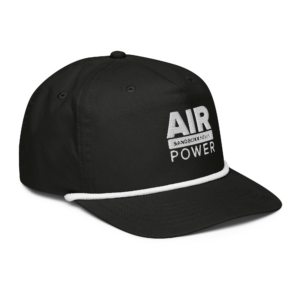
‘AirPower’ Golf Rope Hat
$31.00 Select options This product has multiple variants. The options may be chosen on the product page -
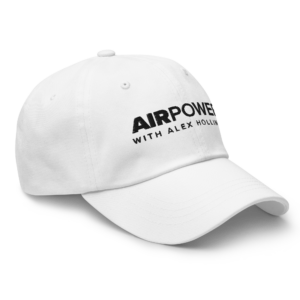
‘Sandboxx News’ Dad Hat
$27.00 Select options This product has multiple variants. The options may be chosen on the product page
